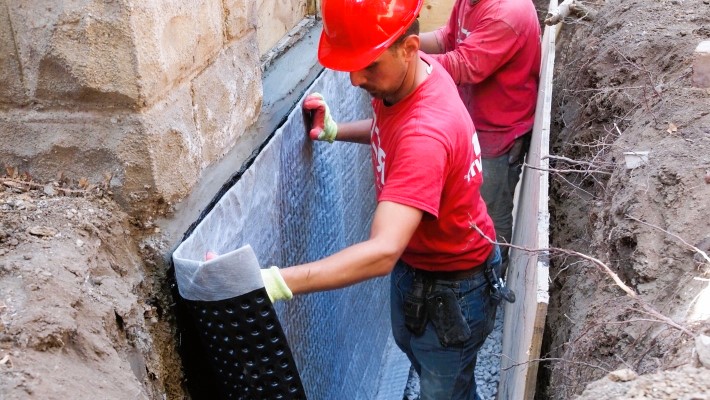The foundation of a building serves as its anchor and provides essential support, but it is also vulnerable to moisture and temperature fluctuations. To ensure the longevity, stability, and energy efficiency of a structure, foundation waterproofing and insulation are critical aspects of the construction process. In this article, we will explore the significance of foundation waterproofing and insulation, emphasizing their importance in building construction.
The Role of the Foundation
A building’s foundation has several key functions:
- Support: It bears the weight of the entire structure, transferring it to the ground beneath.
- Stability: A stable foundation prevents settling or shifting of the building, ensuring structural integrity.
- Moisture Control: It serves as a barrier to prevent moisture from seeping into the building, which can lead to structural damage and health issues.
- Insulation: Foundation insulation helps regulate indoor temperatures and reduces energy consumption.
Foundation Waterproofing

Waterproofing the foundation is a fundamental step in construction, as it protects the building from water intrusion, which can lead to various problems, including:
- Foundation Damage: Prolonged exposure to moisture can weaken the foundation, leading to cracks and structural issues.
- Mold and Mildew: Damp conditions can promote the growth of mold and mildew, which pose health risks.
- Basement Flooding: Poor waterproofing can result in basement flooding during heavy rainfall or snowmelt.
Key Aspects of Foundation Waterproofing
1. Exterior Waterproofing
- Drainage Systems: Installation of effective drainage systems, such as French drains and weeping tiles, to redirect water away from the foundation.
- Waterproof Membranes: Application of waterproof membranes or coatings on the exterior foundation walls to create a barrier against water infiltration.
2. Interior Waterproofing
- Sump Pumps: Installation of sump pumps to manage groundwater and prevent basement flooding.
- Interior Sealants: Application of waterproof sealants or coatings on the interior foundation walls to prevent moisture penetration. Caring for Wooden Surfaces in Canadian Homes: Tips and Tricks.
Foundation Insulation
Insulating the foundation plays a crucial role in maintaining indoor comfort and energy efficiency. Proper insulation reduces heat loss, prevents cold drafts, and provides a thermal barrier. Benefits of foundation insulation include:
- Energy Savings: Reduced heating and cooling costs due to improved insulation.
- Comfort: A more consistent indoor temperature and fewer cold spots.
- Moisture Control: Insulation can also contribute to moisture control by preventing condensation.
Key Aspects of Foundation Insulation

1. Materials
- Rigid Foam: Extruded or expanded polystyrene foam boards are commonly used for foundation insulation.
- Fiberglass: Batt or roll fiberglass insulation can also be used in some applications.
2. Placement
- Insulation can be applied to the exterior or interior of the foundation walls, or it can be installed within the foundation forms (known as “insulated concrete forms” or ICFs).
- Proper installation techniques, including sealing gaps and joints, are essential for effective insulation.
Resources for Foundation Waterproofing and Insulation
For more detailed information on foundation waterproofing and insulation in Canada, you can refer to the official website of the Government of Canada.
Conclusion
Foundation waterproofing and insulation are integral components of building construction, contributing to the longevity, stability, and energy efficiency of a structure. By effectively managing moisture and regulating indoor temperatures, these aspects ensure that a building remains comfortable, structurally sound, and cost-efficient throughout its lifespan. For construction professionals and homeowners alike, understanding and implementing proper foundation waterproofing and insulation techniques are essential for creating durable and energy-efficient buildings.
